Are Ceramic Heat Emitters Good for Leopard Geckos?
Considering all the hype around the use of halogen heat lamps and deep heat projectors within the reptile-keeping community, will the operation of ceramic heat emitters or CHEs become obsolete? Are they even worth trying out and using?
In general, ceramic heat emitters are a good supplementary heating source in a leopard gecko tank. The benefits of its use in a vivarium (e.g., effectively raising ambient temperature) far outweigh the likely issues it may cause (e.g., thermal burns) which can be easily addressed through proper regulation of the device.
If ceramic heat emitters are actually great infrared radiators, why are they not suitable as primary heat sources for leopard gecko vivariums? What are their other drawbacks?
As with most things in life, we have to weigh the pros and cons of using ceramic heat emitters for our cold-bellied leos. Do the benefits outweigh the possible issues? Or are the advantages not worthy enough of the risk? Read on to find out!
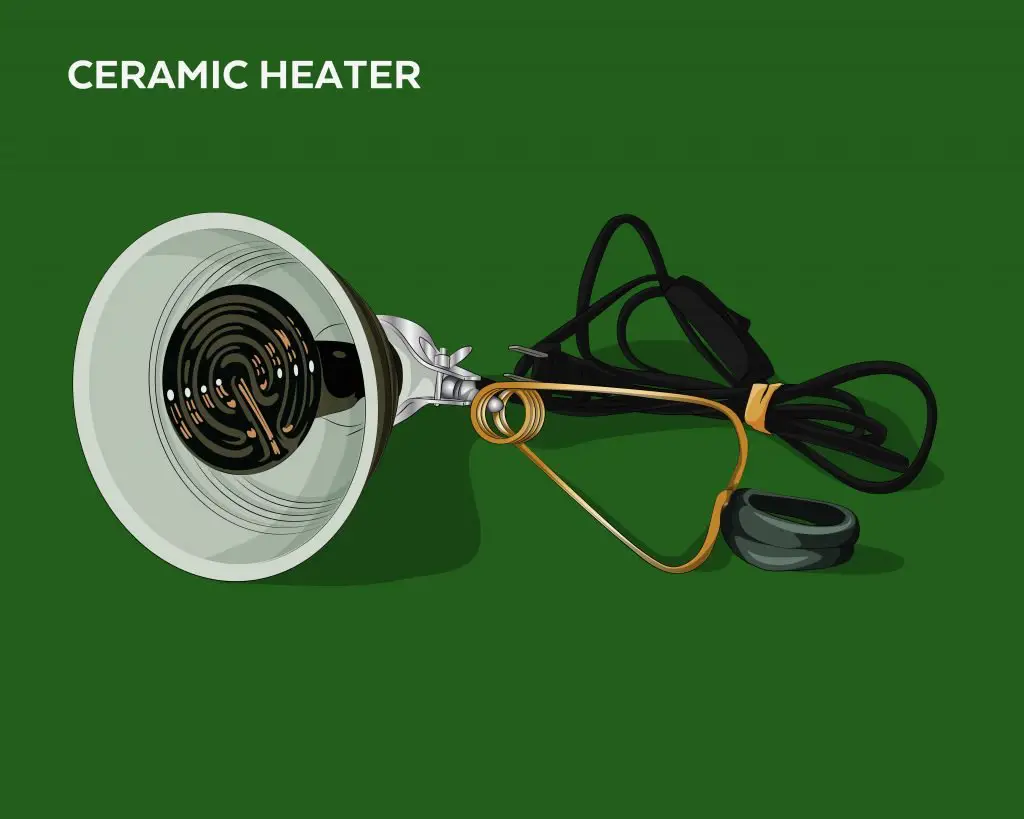
7 Benefits of Heat Emitters in Leopard Gecko Tanks
In recent years, I have noticed that ceramic heat emitters are increasingly getting downgraded by keepers and breeders alike. However, I do think that much of the negative press they are getting is undeserved and unjustified. When used correctly, ceramic heat-emitting bulbs
#1 – Usable During Day and Night
Dull ceramic emitters produce heat without emitting any visible light. Even when the heating element reaches a temperature where it starts to give off an orange glow, the ceramic covering will block the light. As such, they can be used during the day and during the night.
Gone are the days when “invisible” heat lamps were considered part of the normal set-up for leopard geckos. These troublesome products were typically sold to newbie pet parents as “great” heat sources that would allow for night-time viewing because it was previously widely accepted – without much evidence – that leos could not sense lights with certain colors (e.g., red).
But with the dawn of updated and science-based husbandry practices, we now know that any light can still be seen by leopard geckos. Thus, the standard practice nowadays is to have the lighting and heating elements off after dusk to mimic the natural day-night cycle of our cute little critters [1].
In the wild rocky grasslands of South Asia, leopard geckos experience a normal night-time drop in temperature to a low of around 65°F (18°C). Although the moon does provide some illumination from the sunlight, moonlight is extremely dim compared to most artificial lights coming from heat lamps which we can buy.
As such, experts recommend the use of ceramic heat bulbs at night to maintain a desirable temperature gradient of 65-75°F (18-24°C) within the enclosure without disturbing your leopard gecko’s biological clock.
Lastly, ceramic heaters are not only useful for half-day usage, but you can also have them running continuously 24/7 – perfect for really cold winters.
#2 – Effectively Raises Ambient Temperature
Generally speaking, ceramic heat bulbs can raise the ambient temperature in its immediate surroundings by 10 to 20°F.
If you were to ask me for one main thing people often get wrong in terms of a ceramic dark emitter’s heating capability, I would point out that although it is built to heat up a localized area it is not meant to be used as a basking element.
Many enthusiasts have been disappointed with the efficiency of a ceramic radiator’s thermal emission because they expect it to work like any other heat lamp. A ceramic radiator is designed to provide a consistent and even distribution of thermal radiation towards the area it is directed to and the objects in close proximity to it.
In this respect, a ceramic bulb behaves similar to the sun, which provides warmth for all life on earth, and other sun-warmed bodies found in nature (e.g., rocks, trees, etc.), which continue to reradiate thermal radiation throughout the night [2].
How hot can a ceramic heat emitter get?
The body temperature of the average ceramic heat emitter can go up into the hundreds. However, the distance between the bulb, the leopard gecko, and/or the topmost layer of the vivarium substrate is inversely proportional to the level of ambient heat the CHE can provide. At a distance of 12 inches (30 centimeters), the CHE can provide a stable temperature of 68-104°F (20-40°C) depending on its wattage rating.
#3 – Compatibility With Thermostats
A ceramic heat-emitting bulb can be used in connection with virtually any type of thermostat. However, dimming and pulse-proportional thermostats are recommended by most keepers and breeders.
Personally, I know a lot of people that have had CHEs regulated by an on/off or mat thermostat for years at a time without any issues whatsoever. Considering the fact that this is also the easiest and most affordable type, many still use it to this day.
Others have also used ceramic infrared radiators in tandem with a regular dimmer switch with even greater results. But regularly monitoring is needed with this set-up.
When used with a pulse or dimming type most people do notice that the ceramic bulbs last for a considerably longer time and they are far more accurate in terms of temperature control and regulation.
Unfortunately, since the latter two are still relatively hard to come by and also pricier, many leopard gecko pet parents settle with the on/off thermostat and dimmer switch combo.
#4 – High-Quality Materials
Overall, both the ceramic casing and the nichrome coiled wire commonly used in the production of reptile ceramic heat radiator bulbs are highly durable.
As mentioned in the earlier section of this article, ceramic is great in terms of heat radiation applications [3, 4]. It won’t shatter from high temperatures, it is resistant to chemical corrosion and, and it is hard-wearing among many other things. A densely-packed ceramic could fall straight into the cold hard floor without any cushioning whatsoever and still work.
High-quality nichrome coils, in particular, are what make a ceramic heat bulb really great. Unlike other metal and alloy heating elements are quick to oxidize and snap in normal vivarium set-ups. So no, not all CHEs are built equally as some people claim.
Additionally, nichrome has a melting point of 2550°F (1399°C) and ceramics can go over 3632°F (2000°C).
To be quite frank with you, my friends and I have personally had our fair share of low-quality ceramic heat emitters. But our mistake was choosing price over quality.
Dirt-cheap CHEs are typically made with non-nichrome elements and lightly packed ceramics that are quick to crumble and crack without much force applied to them. Keep this in mind if you are planning to get one for your leopard gecko.
#5 – Long Life Span
A typical ceramic heat-emitting bulb used for reptile-keeping can have a life span of more or less 10000 to 25000 hours. This is equivalent to 2 to 6 years at full operation for night-time use only and 1 to 3 years if continuously operated at full power all day long.
Under normal applications and circumstances, a ceramic dark emitter has an average rated life span of up to 25000 hours [5].
To find out exactly how many years it can serve its purpose, you can use the simple equation below:
Life span (years) = Life span (hours) [÷] usage time (hours/day) [÷] 365 (days/year)
As you can see, using it for half a day will prolong its life span. So take that into consideration when planning out the overall heating and tank set-up of your leopard gecko.
| Life Span (Hours) | ÷ | Usage Time (Hours/Day) | ÷ | 365 (Days/Year) | = | Life Span (Years) |
| 25000 | ÷ | 12 | ÷ | 365 | = | 6 |
| 25000 | ÷ | 24 | ÷ | 365 | = | 3 |
If you are only planning to get a CHE for emergency purposes like a power outage and you only have a portable power bank as a backup power supply, a ceramic bulb with a life span of only 10000 hours is the more practical choice.
#6 – Cost-Efficient Heating
The initial and long-term costs of running a single or a pair of low-wattage ceramic heat emitters appropriate for leopard geckos are reasonably affordable
With a quick search on Google, large-scale shopping websites, and exotic pet care supplies stores, you will see that ceramic heat emitters are quite inexpensive – even when they come from well-known brands recognized for high-quality products.
A single CHE bulb will cost you roughly 10-20 USD, but there are usually package deals that offer better prices.
On the subject of electricity costs, even running a ceramic heat emitter constantly won’t cost you several hundred bucks as others insist. It won’t make a serious dent in your pocket unless you only keep spare change. Kidding aside, I’ll help you get a more accurate picture.
For example, a 60-watt ceramic heat emitter costs around 10 USD of electricity per month. The calculation on how to quantify the utility consumption is shown in the table below (and you can check our article for more info)
For most people this is sufficient enough to boost ambient temperatures within a 50-gallon tank – if not, two bulbs of a lower wattage will work. But before we try out its computation, we need to divide the power rating by 1000 since the consumption of electrical energy is generally computed by kilowatts.
| Power Rating (Watts) | x | Time (Hours/Day) | x | Rate in New York (USD) | = | Daily Cost (USD) | x | 30 (Days/Month) | = | Monthly Cost (USD) |
| 0.060 | x | 24 | x | 0.214 | = | 0.3082 | x | 30 | = | 9.245 |
Important notes: First, this electricity cost computation is based on the average electricity rate in New York for May 2021 according to the US Bureau of Labor Statistics [6]. Second, this is only based on a 60W CHE working at full power without any heat regulation (e.g., dimmer, thermostat).
#7 – Effortless Installation
On the whole, bulb-type ceramic infrared heaters are of comparable sizes with regular light bulbs and have a standard Edison screw base (E26/27). Hence, they are compatible with most fixtures and accessories used for lamps.
There is no need to go to specialty stores located miles away from your place just to get fixtures and fittings compatible with a reptile ceramic heater. You could simply go for a quick run to the hardware store to get everything required for installation – even a local mom-and-pop should have the essentials.
Necessary fixtures and accessories needed for ceramic emitter bulbs include:
- Lamp holder with a ceramic socket
- Reflective lamp dome and/or wire guard
- Thermostat and/or plug-in dimmer
Similar to other lighting and heating elements, the CHE can be installed right on top of your leopard gecko’s enclosure, provided that it is not plastic which can easily melt. Or you could opt to have it mounted internally to the vivarium ceiling.
4 Problems of Ceramic Heat Emitters in Leopard Gecko Tanks
So far, it may seem like I can only sing praises for ceramic heat emitters. But in reality, it is far from being the perfect heat source for our beloved leopard geckos – but aren’t all heating elements?
#1 – Cannot Serve as the Primary Heat Source
Usually, ceramic heater bulbs for reptile husbandry produce far-infrared thermal radiation and negligible levels of mid-infrared thermal radiation [1, 2, 3]. Altogether, the heat produced by a CHE is not sufficient for core-penetrating heat.
According to best husbandry practices, the perfect artificial heat source we need to provide for our leopard geckos, and other pet reptiles, should mimic what they get in the wild, from the sun.
Sunlight is composed of:
- 8% ultraviolet radiation
- 44% visible light
- 32% near-infrared radiation (A)
- 14% mid-infrared radiation (B)
- 2% far-infrared radiation (C)
What we and leopard geckos perceive as heat is actually infrared radiation as a whole. However, IR-A, IR-B, and IR-C have differing levels of body penetration – in decreasing order. Moreover, optimal deep heat absorption falls into the range of IR-A (at about wavelengths of 800 nanometers).
In comparison, ceramic heat emitter bulbs produce:
- 0% ultraviolet radiation
- 0% visible light
- 0% near-infrared radiation (A)
- 1% mid-infrared radiation (B)
- 99% far-infrared radiation (C)
A ceramic dull emitter predominantly only emits IR-C (from wavelengths of 3000 nanometers onward) which is the least body penetrating thermal radiation – only superficial heat penetration. In effect, it is not suitable for primary heating use.
Solution
Provide a heat lamp, (e.g., halogen lamp) that produces all three forms of infrared radiation for your leopard gecko. Only start considering the use of a ceramic heat emitter if the ambient temperature in your place consistently dips way below 60°F (16°C) for months at a time or all year round.
#2 – Not Suitable for All Set-Ups
Some manufacturers clearly state that the ceramic heating bulb they produce is only suitable in certain types of enclosure set-ups.
The two most common limitations of ceramic heaters use in leopard gecko vivariums include incompatibility with primary material (e.g., glass, plastic) and the option for external top installation only.
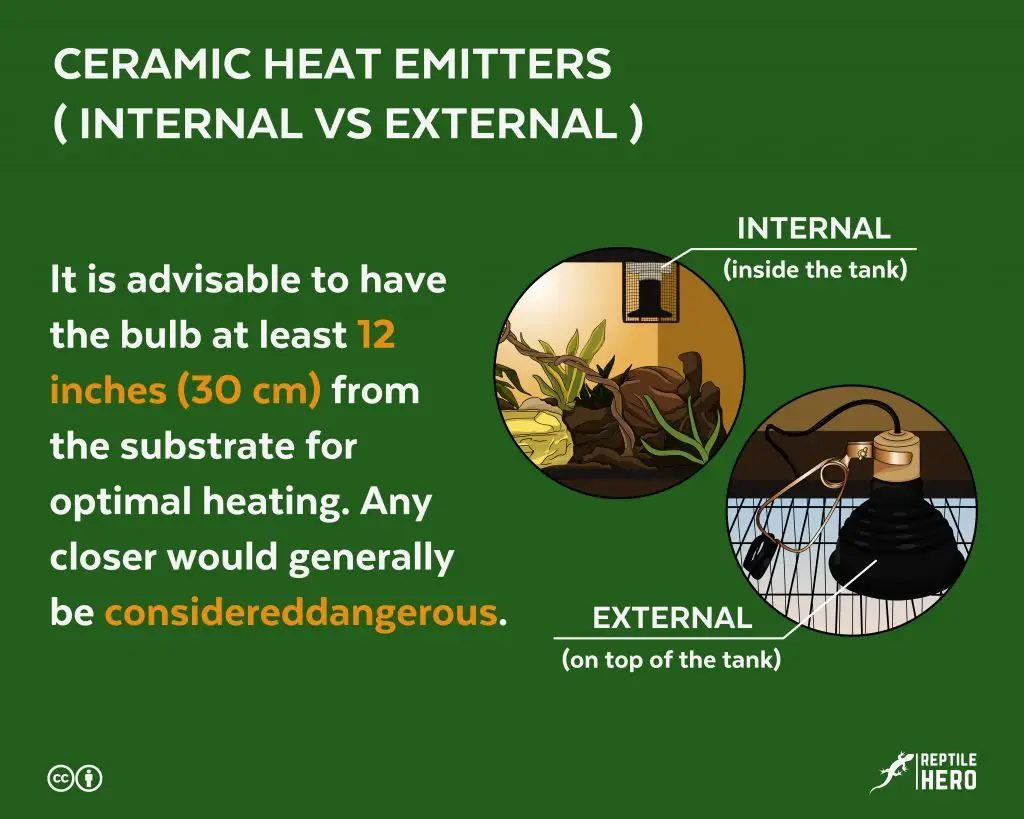
Others even go on to indicate the specific fixture models that their CHE can be used with (e.g., exclusive use with wire guards).
For leopard gecko caretakers with fully enclosed PVC and wooden tanks, this is a big issue because light and heating elements need to be installed internally. Doing otherwise would typically result in an increased likelihood of fires and other hazards.
Solution
Before purchasing the ceramic bulb, ensure that it is appropriate for your setup. If you have no other options, you could opt to modify the ceiling of your full-paneled tank. Replace it with a heat-resistant screen lid so that it can still be mounted externally.
#3 – Intense Heat Produced Can Burn
The operating temperature of a ceramic heat-emitting bulb is incredibly high. Direct contact with leopard geckos can cause severe thermal burns. It can also start a fire if it touches any flammable material within or close to the enclosure (e.g., wood branches, live plants, etc.)
Low- and mid-wattage CHEs, which are ordinarily used in the reptile community,
have operating surface temperatures that could quickly climb up to 932°F (500°C) when operated at full power without any sort of heat regulation and/or timer [5].
No joke, you could easily burn the skin – and probably some muscle too – right off the palm of your hand by touching it directly while it is still turned on or right after it has just been turned off.
It could also melt or light vivarium furnishings and decors on fire if they are placed too close to the bulb.
Solution
Follow all safety guidelines explicitly declared by the manufacturers in the manual/guide and packaging of the ceramic radiator unit.
In addition, you should make sure that nothing comes into contact with the CHE. The immediate area around and below the point at which it is mounted should be kept as a relatively open area.
#4 – No Visual Cues for Operation
Unlike light-emitting heat sources that produce light at high working temperatures, ceramic infrared emitters let out no visible light which serves as a highly useful visual cue in determining whether or not a heater is working properly.
For large-scale industrial applications, manufacturers typically offer CHE units with temperature-sensitive coatings. It is similar to those color-changing mugs that have reversible colors when hot or cold water is transferred into them.
This would be a big selling feature if it was an available option for reptile-specific units. Unfortunately, it isn’t yet at the time of writing.
Our current selection is limited to plain colored ceramic heaters that neither change color nor produce light at high operating temperatures to signal that it is working properly without having to check it manually.
Solution
Keep a no-contact infrared thermometer, like the one below, close to your leopard gecko’s enclosure for fast and reliable temperature readings of the ceramic infrared heater bulb itself.
Aside from this, make sure that you have accurate digital thermometers in the tank for reliable ambient temperature readings as well.
Compatibility of Ceramic Heat Emitters and Leopard Geckos
With the advent of more sun-like heating sources for leopard geckos, the humble ceramic heat emitter has consistently been pushed to the sidelines. As a consequence, some beginner hobbyists get the impression that CHEs are useless but this isn’t true.
To get people to understand how practical ceramic radiators actually are, we need to help them see what it is and how it works.
What is a Ceramic Heat Emitter?
In general, a ceramic heat emitter (CHE) is a heating element composed of two main parts: 1) a ceramic casing and 2) a metal – or alloy – wire heating element. These are used for heating applications across multiple fields such as reptile husbandry, chemical curing, and culinary arts.
Once I started doing my research on what to buy for my first-ever leopard gecko years ago, a ceramic heat emitter was one of the top things that kept popping up. So I studied it further and found out that a ceramic heat emitter is essentially a heating element encased in a ceramic housing [3].
Materials
You might think that pure metals like copper and aluminum are better heating elements because they conduct electricity better. However, they need to be molded into extremely thin wires for them to put out a significant amount of heat after they are turned on. Due to this, pure metal wire elements are prone to breaking and decaying, especially when exposed to air. That’s why special materials like nichrome in particular are used for ceramic heaters.
Nichrome: also known as chromel, is a high-resistance alloy typically made up of 80-90% nickel and 10-20% chromium but it could also contain other elements like iron. It is the oldest heating element of its kind and was first patented in the US way back in 1906.
When in operation, nichrome can reach several hundred degrees and subsequently form chromium-oxide around itself which will serve as a protective coating against oxidation. Aside from that, nichrome has great ductility, integrity, and stability despite being low-cost.
Ceramic: The ceramic casing also serves a crucial role in efficient thermal radiation as it is equally capable of absorbing and radiating infrared. Different ceramic materials (e.g., porcelain, stoneware, etc.) have specific characteristics, but they are usually able to withstand the incredibly high operating temperatures of CHEs that can climb into the thousands [3, 4]. Moreover, ceramics are highly durable and resistant to corrosion.
You can find a CHE as a panel or a bulb. Panels are either curved or flat, while bulbs are ordinarily cone-shaped or flat-faced. Ceramic heat panels are generally used in large-scale industrial settings as they do have to eat up more power and produce more heat. The smaller bulb-type ceramic thermal radiators have a standard Edison screw base and are more commonly used within the reptile community.
How Does a Ceramic Heat Emitter Work?
The average ceramic heat emitter used in leopard gecko tanks converts electrical energy into thermal energy through a process called Joule heating or resistive heating
Like any other electrical device, a ceramic heat bulb needs a power supply to work. However, once electrical current flows through the coiled nichrome wire element it does not easily flow through but is instead met with a great deal of resistance. As a result, thermal energy is produced. This is, at a microscopic scale, the same phenomenon that happens when you quickly rub your hands against each other. That friction creates heat.
Joule heating, resistance heating, ohmic heating, and electric heating, are all used to refer to this very phenomenon.
A ceramic unit can heat up to several hundred degrees, to a point where its internal wire element itself starts to glow yellow-orange or red which is typical of filaments used in regular light bulbs as well.
But since it is cast into an opaque ceramic material rather than placed in a clear glass receptacle, the little visible light produced does not pass through, only heat is emitted. For this reason, ceramic infrared radiators, or CHEs are also called dull or dark emitters.
Furthermore, a ceramic heat-emitting bulb does not need to be in direct contact with another object for effective heat transmission to occur. In fact, it can work perfectly fine in a vacuum. So you can install it as an overhead heating element in your leopard gecko’s vivarium without fearing for your adorable soft-scaled baby’s safety and well-being.
Takeaways
The benefits of using ceramic heat emitters for leopard geckos are usability during day and night, effective ambient temperature elevation, compatibility with all thermostats, high durability of build, long life span, cost efficiency, and straightforward installation.
Conversely, the use of ceramic radiating bulbs may cause the following problems: insufficient heating, limited set-up compatibility, dangerously intense heat, and absence of visual cues during operation. Nevertheless, these can all be resolved accordingly.
As a general rule, a ceramic heat emitter (CHE) is an infrared radiator made of a densely packed ceramic casing and a coiled metal/alloy wire.
Reptile ceramic radiator bulbs, through the process of Joule heating, transform electrical energy into thermal energy when there is a power supply present.
Sources
[1] https://arborviewah.com/wp-content/uploads/2021/03/Leopard-Gecko-PDF.pdf
[2] https://www.animalsathomenetwork.com/wp-content/uploads/2020/09/InfraRed-Heating-for-Reptiles.pdf
[3] https://www.bls.gov/regions/
[5] https://beesindustrial.com/content/files/content/vendorcatalogs/tempco/sections/Section7.pdf
[6] https://www.bls.gov/regions/midwest/data/averageenergyprices_selectedareas_table.htm

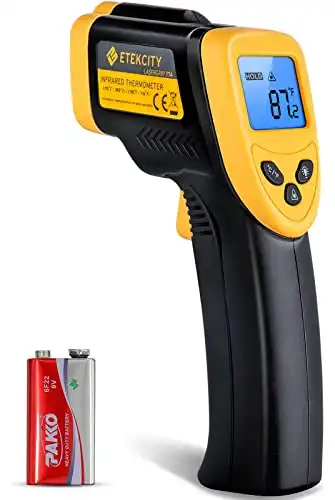
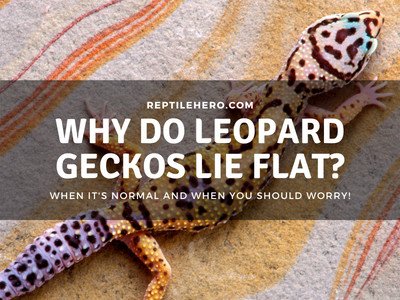
![Gecko Alone While On Vacation? [7 Things To Check]](https://www.reptilehero.com/wp-content/uploads/2022/03/gecko-alone-cc-1-768x614.jpg)

![Are Terrariums and Vivariums the Same? [6 Differences]](https://www.reptilehero.com/wp-content/uploads/2021/06/Terrarium-vs-Vivarium-768x614.jpg)
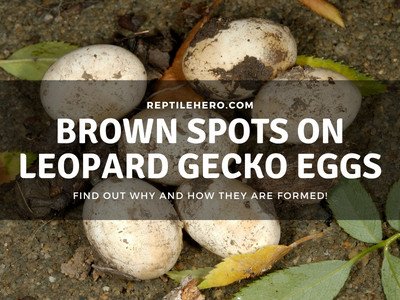
![4 Reasons Why Leopard Geckos Get Neutered [and Problems]](https://www.reptilehero.com/wp-content/uploads/2021/04/Can-Gecko-Get-Neutered-768x614.jpg)
